Portugal, a country brimming with rich history, vibrant culture, and stunning landscapes, is a must-visit destination in Europe. Whether you’re a history buff, a nature lover, or simply someone who enjoys good food and beautiful beaches, Portugal has something for everyone. Here are 10 outstanding Portugal attractions you should not miss when visiting this captivating country.
1. Belém Tower (Torre de Belém), Lisbon
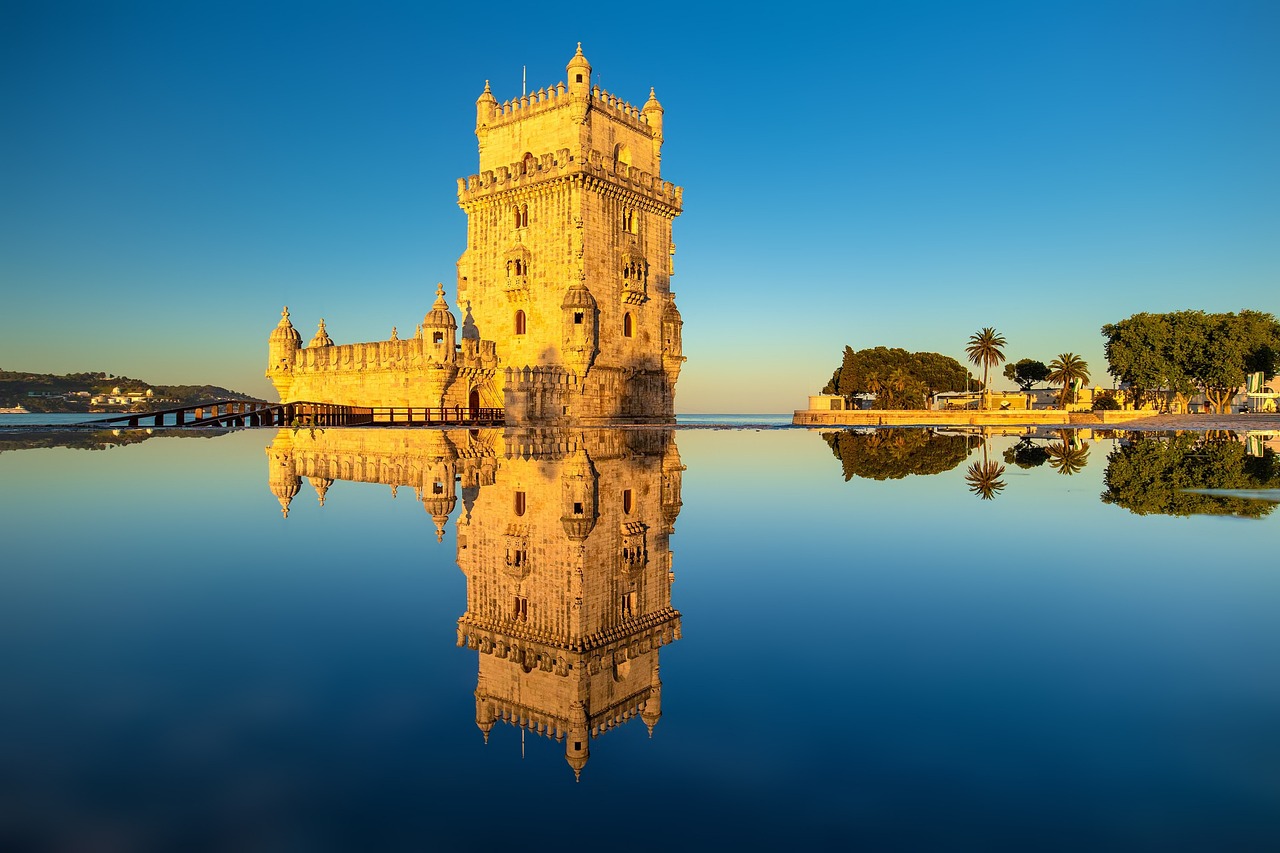
Belém Tower is more than just a historical monument; it’s a symbol of Portugal’s maritime history and a masterpiece of Manueline architecture. Constructed between 1514 and 1520, the tower originally served as a fortress to protect Lisbon from seafaring invaders. It was also the departure point for many of the explorers during the Age of Discovery, making it a poignant reminder of Portugal’s rich nautical past.
The tower’s design is an architectural blend of Gothic, Moorish, and Renaissance elements, adorned with intricately carved stonework, including rope motifs, armillary spheres, and crosses of the Order of Christ. Visitors can explore the tower’s five floors, each with a distinct purpose, from the Governor’s Hall to the chapel. The rooftop terrace offers breathtaking views of the Tagus River and the surrounding areas. Don’t miss the opportunity to take in the stunning sunset over the river, which adds a magical touch to this historical landmark.
2. Alfama District, Lisbon
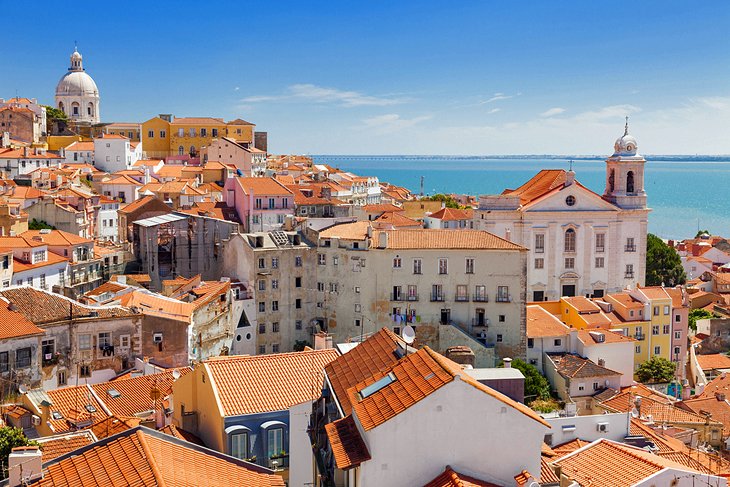
Alfama is Lisbon’s oldest and most enchanting district, a labyrinth of narrow, winding streets, alleys, and stairways that lead to hidden courtyards, quaint squares, and picturesque viewpoints. The area retains much of its original medieval character, with its cobbled streets and ancient houses that seem to cling to the hillside. This district is the heart and soul of Lisbon, offering a glimpse into the city’s rich history and traditions.
One of the highlights of Alfama is the Lisbon Cathedral, or Sé, a striking Romanesque structure dating back to the 12th century. Another must-visit is the Miradouro da Senhora do Monte, one of Lisbon’s highest viewpoints, offering panoramic views of the city, including the Tagus River, the São Jorge Castle, and the 25 de Abril Bridge.
Alfama is also famous for its Fado music, a genre that expresses the deep emotions and soul of the Portuguese people. The district comes alive at night with the melancholic sounds of Fado emanating from traditional taverns. Visiting Alfama is like stepping back in time, where every corner tells a story of the past, and every street offers a new discovery.
Also Read: Luxury Train Journeys Across Europe 2024
3. Palácio da Pena, Sintra
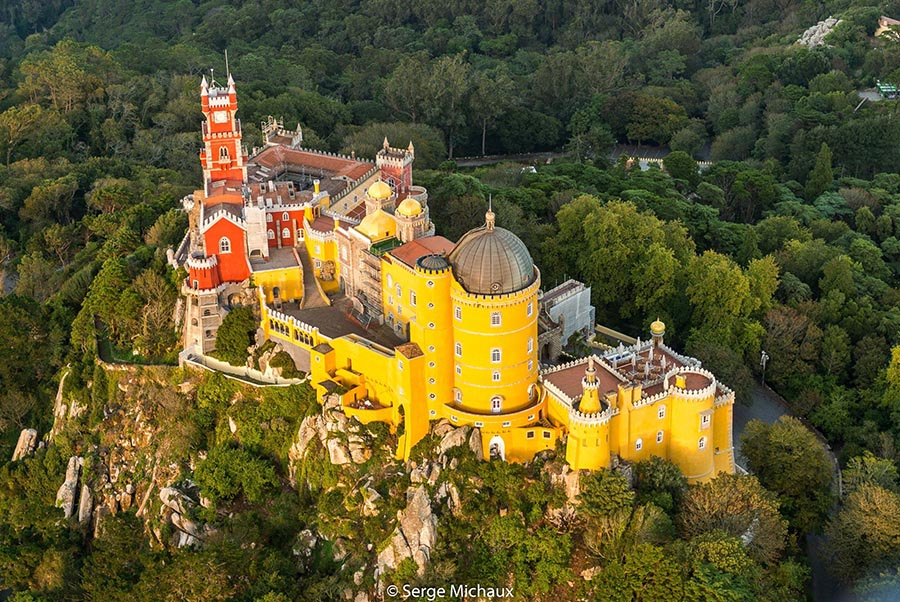
Perched on a hilltop overlooking the town of Sintra, the Palácio da Pena is a vibrant and whimsical castle that seems to be lifted straight out of a fairytale. Commissioned by King Ferdinand II in the 19th century, the palace is a stunning example of Romanticist architecture, blending various styles, including Gothic, Moorish, and Manueline, into a harmonious and enchanting design.
The palace’s exterior is a kaleidoscope of colors, with vivid yellow walls, red towers, and blue accents, complemented by intricate stone carvings and statues. The interior is equally impressive, with lavishly decorated rooms filled with antique furniture, exquisite paintings, and ornate ceilings. One of the most fascinating features of the palace is the Triton statue, a mythical creature that symbolizes the allegory of creation, positioned above a window in the main façade.
Surrounding the palace is the expansive Pena Park, a lush and verdant garden filled with exotic plants, winding paths, and hidden grottoes. The park also offers several viewpoints that provide breathtaking panoramas of the palace and the surrounding Sintra Mountains. A visit to Palácio da Pena is like entering a magical world where history, art, and nature come together in perfect harmony.
4. Douro Valley
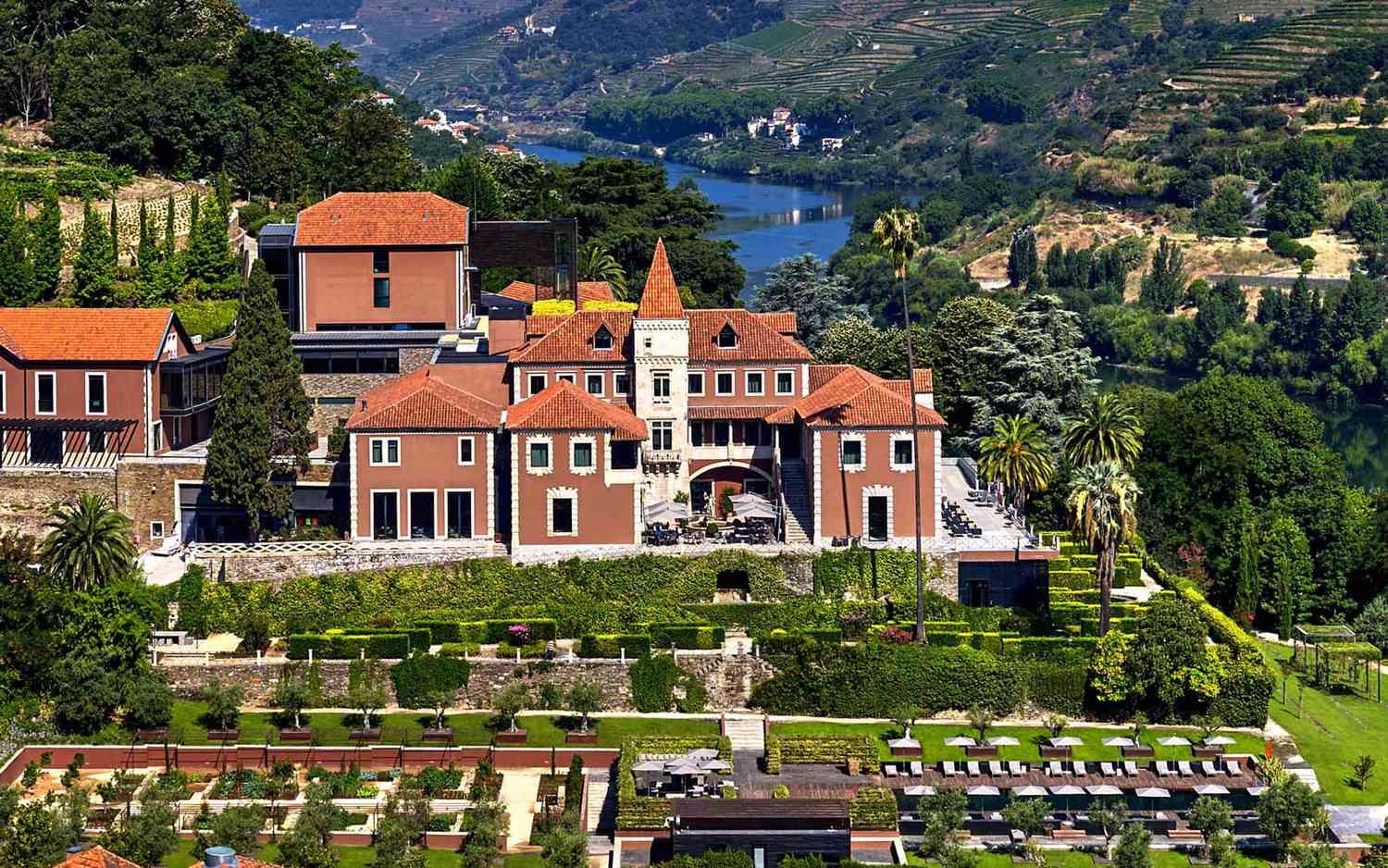
The Douro Valley is one of Portugal’s most beautiful and unspoiled regions, renowned for its terraced vineyards, stunning landscapes, and world-famous Port wine. The valley, which follows the course of the Douro River from the Spanish border to the city of Porto, is a UNESCO World Heritage site, celebrated for its unique cultural landscape shaped by centuries of winemaking.
The Douro Valley is the oldest demarcated wine region in the world, with a history that dates back over 2,000 years. The region’s terraced vineyards, carved into the steep hillsides, create a breathtaking mosaic of green and gold that changes with the seasons. The river itself is a vital part of the landscape, winding its way through the valley and providing a tranquil backdrop to the vineyards.
Visitors to the Douro Valley can embark on a variety of experiences, from scenic river cruises to wine tasting tours at the region’s historic quintas (wine estates). The valley is also dotted with charming villages and towns, such as Pinhão and Peso da Régua, where you can explore traditional Portuguese culture and cuisine. Whether you’re a wine connoisseur or simply someone who appreciates natural beauty, the Douro Valley offers a unique and unforgettable experience.
5. Ribeira District, Porto
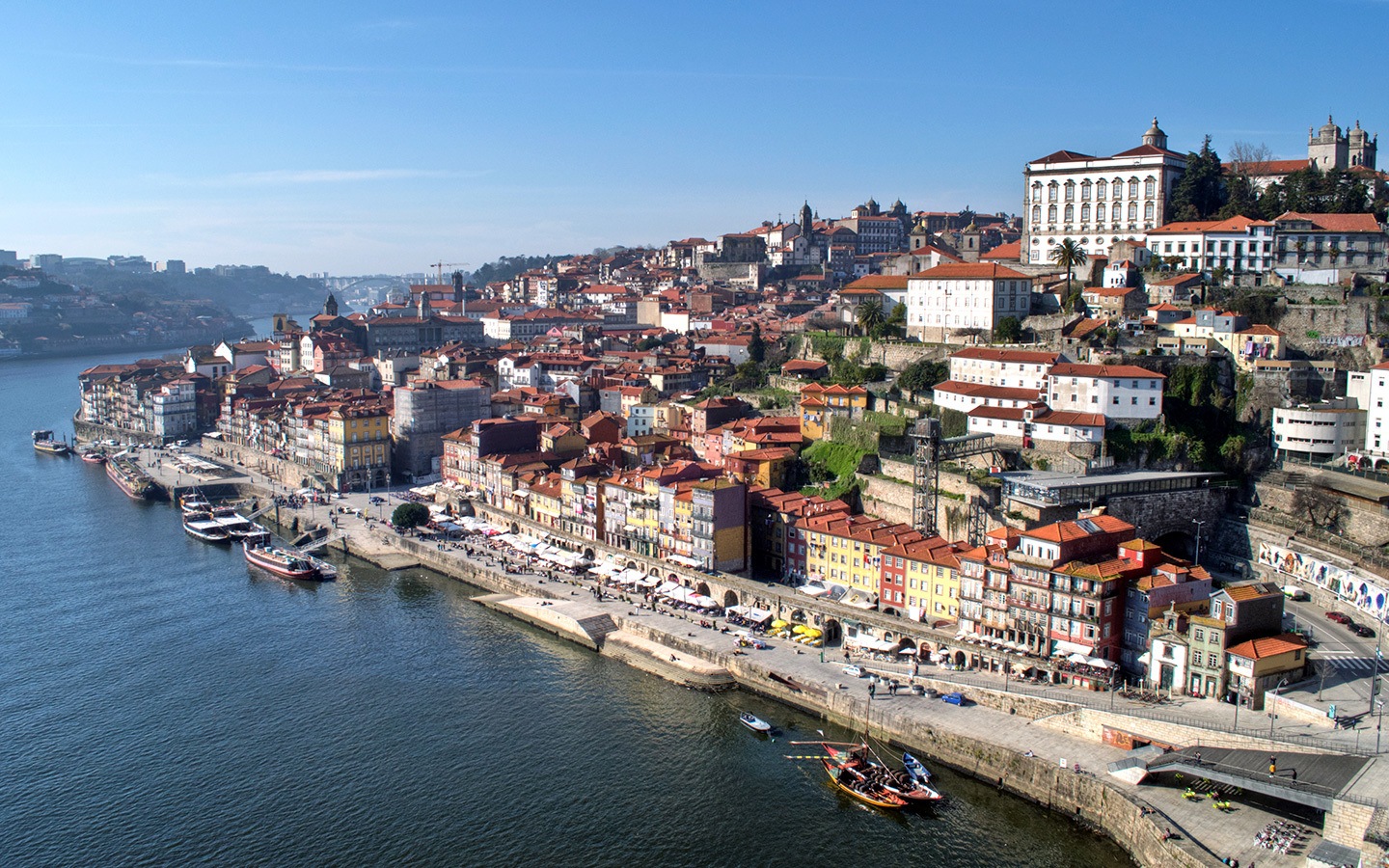
The Ribeira District is the beating heart of Porto, a vibrant and colorful neighborhood that stretches along the northern bank of the Douro River. As one of the city’s oldest districts, Ribeira is a UNESCO World Heritage site, celebrated for its historic architecture, lively atmosphere, and stunning riverfront views.
The district is a maze of narrow streets, steep stairways, and alleys lined with traditional houses painted in a rainbow of colors. The waterfront promenade, known as Cais da Ribeira, is the focal point of the district, bustling with cafes, restaurants, and bars where you can enjoy a meal or a drink while watching the boats glide by on the river.
One of the most iconic landmarks in Ribeira is the Dom Luís I Bridge, a double-deck iron bridge that connects Porto to the neighboring city of Vila Nova de Gaia. The bridge offers stunning views of the river and the city, particularly at sunset when the sky is ablaze with color. Ribeira is also home to several historic sites, including the Church of São Francisco, known for its ornate Baroque interior, and the Palácio da Bolsa, a 19th-century neoclassical building that was once the city’s stock exchange.
Whether you’re exploring the narrow streets, enjoying a meal by the river, or simply soaking in the lively atmosphere, Ribeira is a must-visit destination that captures the essence of Porto’s charm and character.
Also Read: Top 5 Best Nightclubs in Majorca 2024
6. Jerónimos Monastery, Lisbon
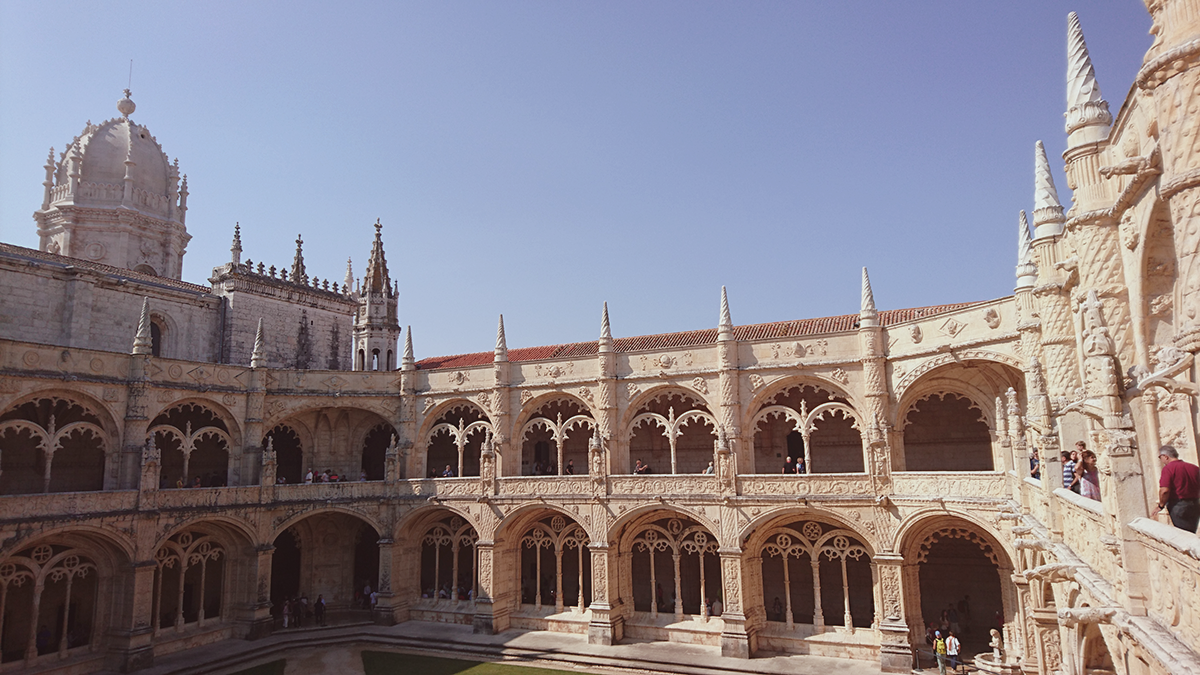
The Jerónimos Monastery, or Mosteiro dos Jerónimos, is one of Portugal’s most significant historical landmarks and a UNESCO World Heritage site. Located in the Belém district of Lisbon, this magnificent monastery was commissioned by King Manuel I in 1501 to commemorate Vasco da Gama’s successful voyage to India and to honor the Virgin Mary.
The monastery is a prime example of Manueline architecture, a uniquely Portuguese style that blends Gothic, Moorish, and Renaissance elements. The exterior is adorned with intricate carvings of maritime motifs, religious symbols, and royal emblems, reflecting Portugal’s seafaring history and its connection to the Age of Discovery. The grand entrance portal, with its detailed statues of saints and intricate filigree work, is particularly striking.
Inside, the monastery is just as impressive. The Church of Santa Maria, with its soaring ceilings supported by slender, palm-like columns, is a masterpiece of architectural design. The church is also the final resting place of Vasco da Gama, whose tomb is located near the entrance. The cloisters, considered among the most beautiful in the world, are a serene space filled with ornate arches, delicate carvings, and beautifully maintained gardens.
A visit to Jerónimos Monastery is not just a journey through Portugal’s religious and architectural history but also a tribute to the explorers who set sail from Lisbon to discover new worlds.
7. Azores Archipelago
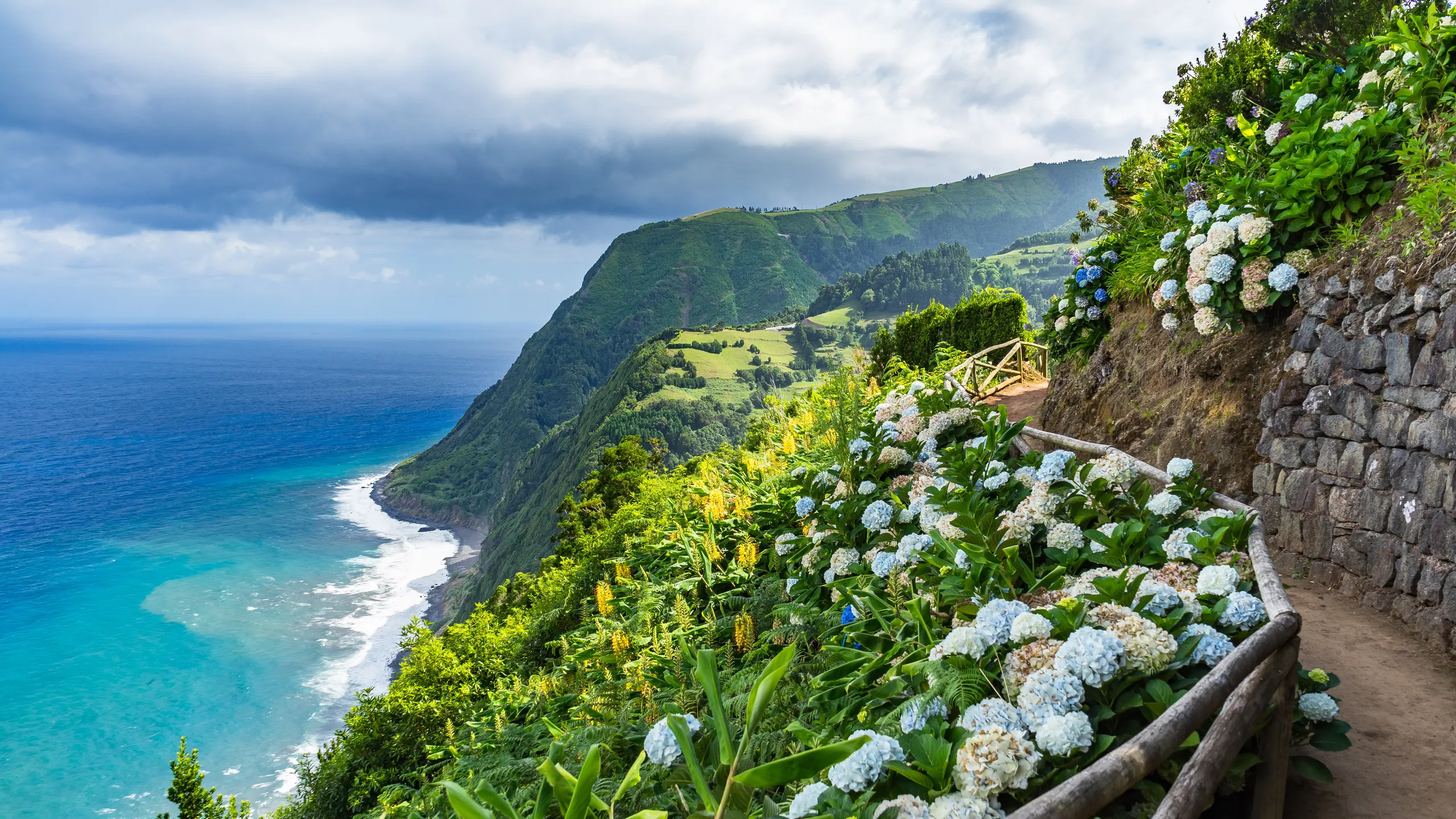
The Azores, a remote and enchanting archipelago in the middle of the Atlantic Ocean, is a paradise for nature lovers and adventure seekers. Comprising nine volcanic islands, the Azores offer a stunning array of landscapes, from lush green valleys and dramatic cliffs to crystal-clear lakes and bubbling hot springs.
São Miguel, the largest and most visited island, is famous for its twin lakes, Lagoa das Sete Cidades, which are nestled within a massive volcanic crater. The contrasting blue and green hues of the lakes are a sight to behold, especially when viewed from the Vista do Rei viewpoint. São Miguel is also home to the Furnas Valley, where geothermal activity creates natural hot springs and geysers. Visitors can soak in the therapeutic waters of the Terra Nostra Garden or enjoy the local specialty, cozido, a stew slow-cooked underground using volcanic heat.
Each of the Azores islands has its own unique charm. Pico Island is dominated by Mount Pico, Portugal’s highest peak, which offers challenging hikes and breathtaking views. Terceira Island is known for its historic towns, such as Angra do Heroísmo, a UNESCO World Heritage site. Faial Island is famous for its marina, a popular stopover for transatlantic yachts, and the Capelinhos Volcano, where visitors can explore a lunar-like landscape created by a volcanic eruption in the 1950s.
The Azores are also a prime destination for whale watching, as the waters around the islands are teeming with marine life, including sperm whales, dolphins, and turtles. Whether you’re exploring volcanic landscapes, diving in crystal-clear waters, or simply relaxing in the tranquil surroundings, the Azores offer an unforgettable escape to nature.
8. Algarve Beaches
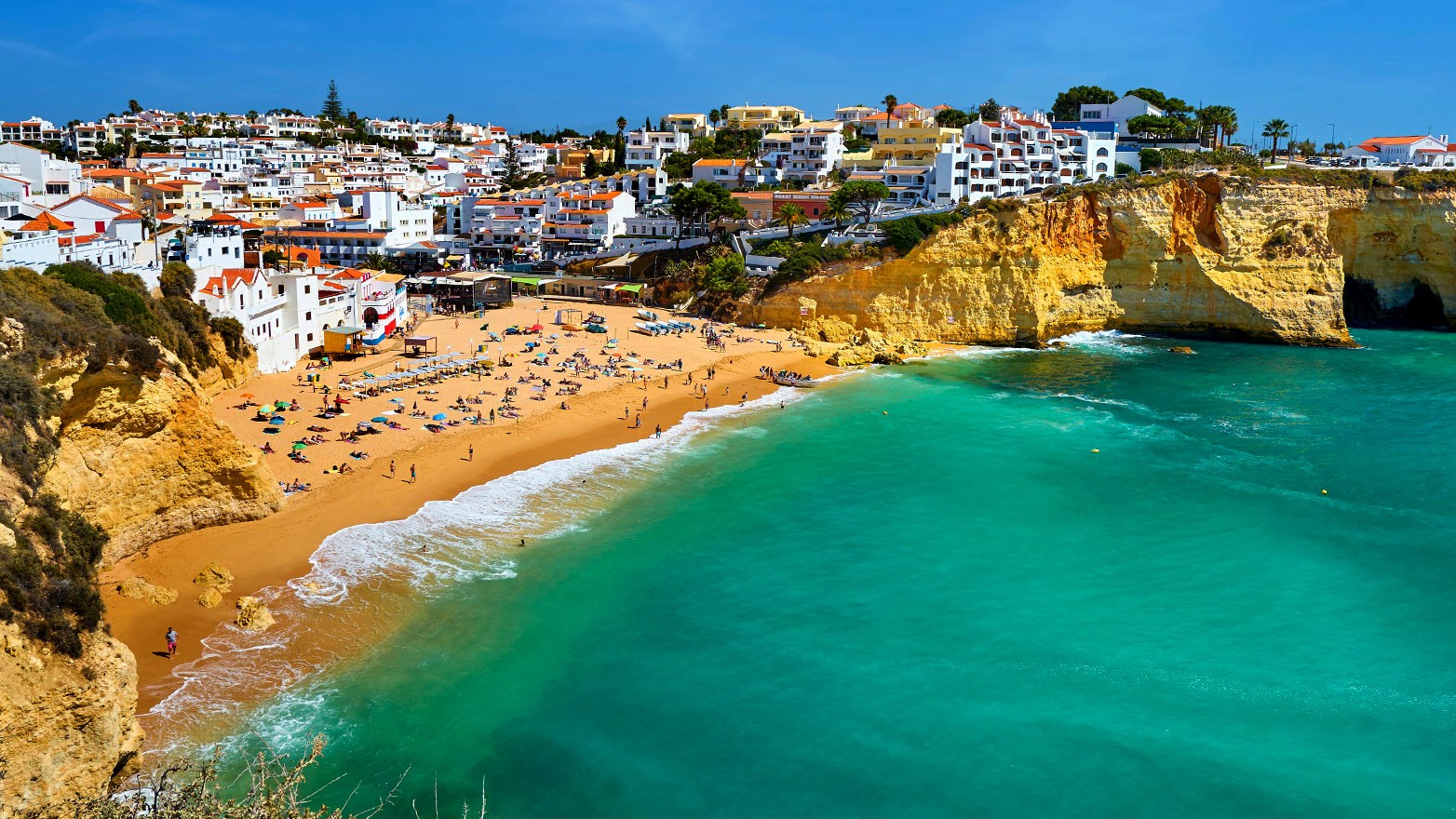
The Algarve, Portugal’s southernmost region, is synonymous with sun, sea, and stunning beaches. Known for its dramatic cliffs, golden sands, and crystal-clear waters, the Algarve is a haven for beach lovers and water sports enthusiasts alike.
One of the most famous beaches in the Algarve is Praia da Marinha, often ranked among the most beautiful beaches in the world. This beach is known for its natural rock formations, towering cliffs, and secluded coves, creating a picturesque setting that is perfect for swimming, snorkeling, and sunbathing. The clear waters reveal an underwater world teeming with marine life, making it a popular spot for snorkeling and diving.
Another must-visit beach is Praia do Camilo, located near the town of Lagos. Accessed by a wooden staircase that winds down the cliffs, this small but stunning beach is framed by towering rock formations and offers calm, turquoise waters that are ideal for swimming. Nearby, the Ponta da Piedade is a dramatic headland with spectacular sea caves, arches, and grottoes that can be explored by boat.
For those seeking adventure, the Algarve offers a range of water sports, including surfing, windsurfing, and kayaking. The region is also famous for its sea caves, particularly the Benagil Cave, which can be reached by boat or kayak. The cave’s massive dome-shaped ceiling and the opening to the sky create a magical, otherworldly atmosphere.
Beyond the beaches, the Algarve boasts charming towns and villages, such as Tavira, Albufeira, and Faro, where visitors can explore historic sites, enjoy fresh seafood, and experience the region’s vibrant nightlife. The Algarve’s combination of natural beauty, outdoor activities, and cultural experiences makes it a must-visit destination for any traveler to Portugal.
Also Read: 12 Things You Can’t Miss in Porto 2024!
9. University of Coimbra
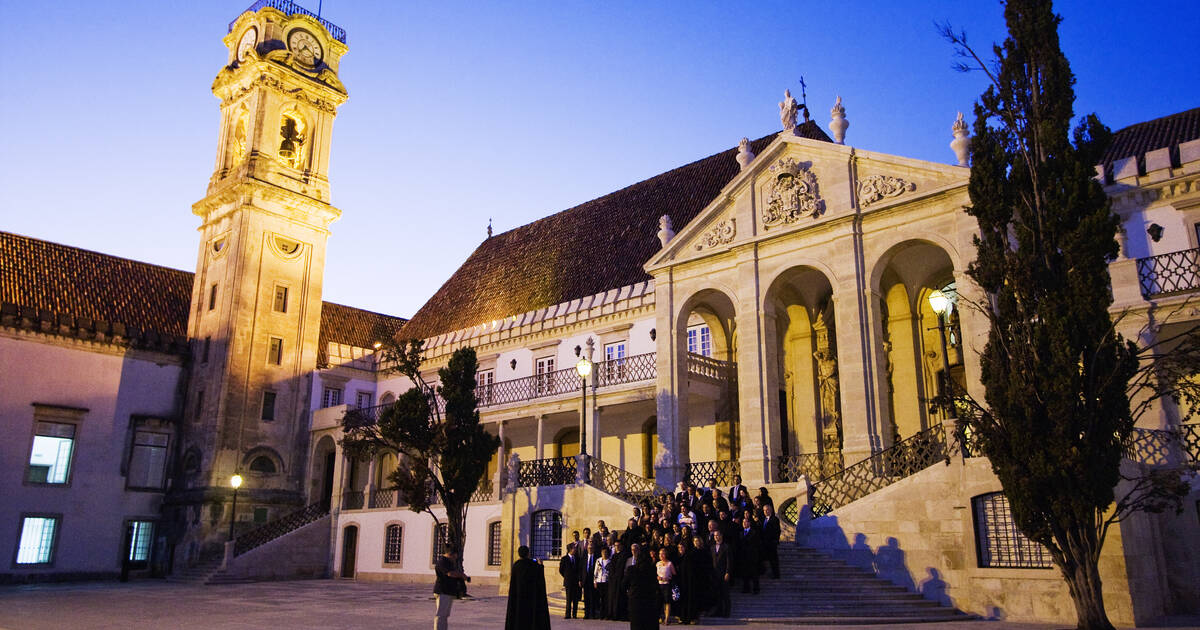
The University of Coimbra, founded in 1290, is one of the oldest and most prestigious universities in Europe, steeped in centuries of history and tradition. Located in the city of Coimbra, the university is a UNESCO World Heritage site, celebrated for its stunning architecture, rich academic heritage, and cultural significance.
The university’s most iconic building is the Joanina Library, an exquisite Baroque masterpiece that houses a vast collection of rare books and manuscripts. The library’s opulent interiors, with gilded woodwork, frescoed ceilings, and ornate bookcases, create a breathtaking atmosphere that transports visitors to another era. The library also has a unique feature: a colony of bats that help protect the books by eating insects that could damage them.
Another highlight of the university is the Capela de São Miguel, a small but beautiful chapel known for its intricate azulejos (painted ceramic tiles) and a magnificent Baroque organ with over 2,000 pipes. The chapel is still used for religious ceremonies and is a testament to the university’s spiritual and cultural history.
The university’s main courtyard, the Paço das Escolas, is surrounded by historic buildings, including the Royal Palace of Alcáçova, which served as the residence of Portuguese monarchs before being converted into the university’s administrative center. From the courtyard, visitors can enjoy panoramic views over the city of Coimbra and the Mondego River.
The University of Coimbra is also known for its unique academic traditions, such as the wearing of black capes by students and the annual Queima das Fitas (Burning of the Ribbons) festival, a colorful celebration marking the end of the academic year. A visit to the University of Coimbra offers a fascinating glimpse into Portugal’s academic and cultural heritage, set against the backdrop of one of the country’s most historic cities.
10. Óbidos
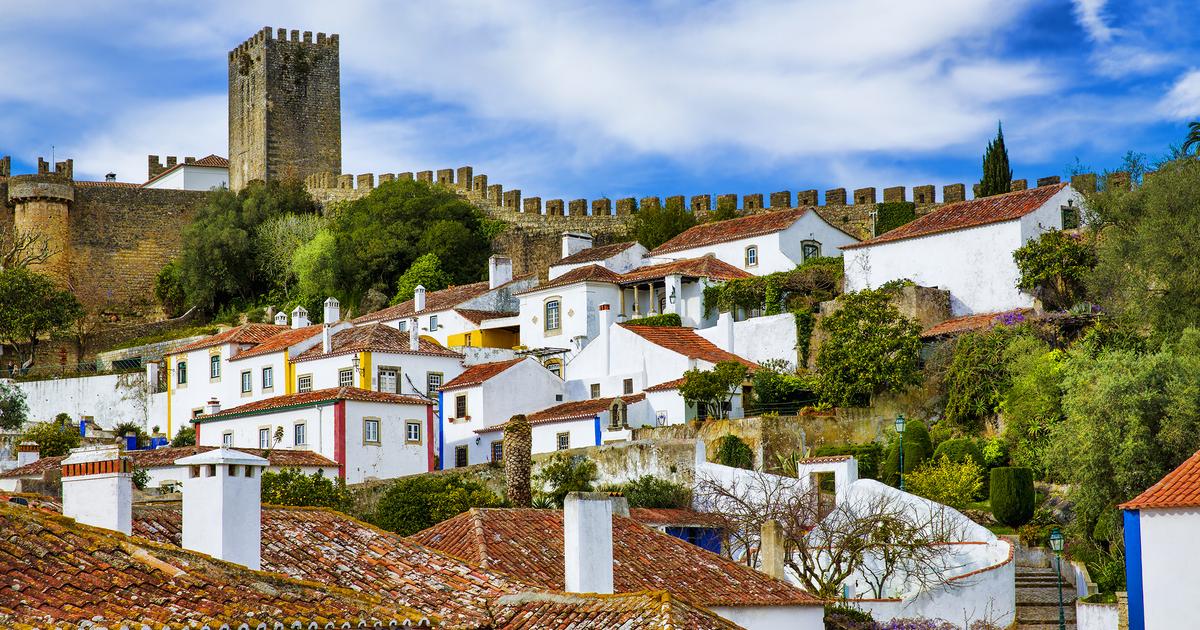
Óbidos is a picture-perfect medieval town that seems to have stepped out of a storybook. Located about an hour’s drive north of Lisbon, Óbidos is renowned for its well-preserved medieval architecture, cobblestone streets, and whitewashed houses adorned with vibrant bougainvillea.
The town is surrounded by ancient walls, and a walk along the ramparts offers stunning views of the town’s red-tiled roofs, narrow alleyways, and the surrounding countryside. The walls, which date back to the 14th century, are remarkably intact and provide a unique perspective of the town’s layout.
At the heart of Óbidos is the imposing Óbidos Castle, a fortress that dates back to the 12th century. The castle has been converted into a luxurious pousada (historic hotel), allowing visitors to experience a night in a medieval setting. The castle is also the focal point of the town’s annual Medieval Market, where locals and visitors alike don period costumes and participate in reenactments, jousting tournaments, and traditional crafts.
Óbidos is also famous for its charming streets, lined with shops selling local crafts, ceramics, and the town’s signature drink, Ginja de Óbidos, a sweet cherry liqueur traditionally served in a chocolate cup. The town’s main street, Rua Direita, leads to the beautiful Igreja de Santa Maria, a 12th-century church with a stunning Baroque interior and azulejo-covered walls.
Throughout the year, Óbidos hosts several cultural events, including the Óbidos International Chocolate Festival and the Óbidos Literary Festival, which attract visitors from around the world. Whether you’re exploring the town’s historic sites, shopping for local crafts, or simply soaking in the atmosphere of a bygone era, Óbidos is a destination that captures the imagination and offers a glimpse into Portugal’s medieval past.
Also Read: Top 5 Hidden Gems in the Algarve 2024
Plan Your Portugal Adventure with Star Vacations! Whether you’re drawn by history, culture, or natural beauty, Portugal has it all. These 10 attractions offer a glimpse into the diverse experiences that await you in 2024. Ready to explore the wonders of Portugal? Contact Star Vacations at 9582254235 to start planning your unforgettable journey today!













